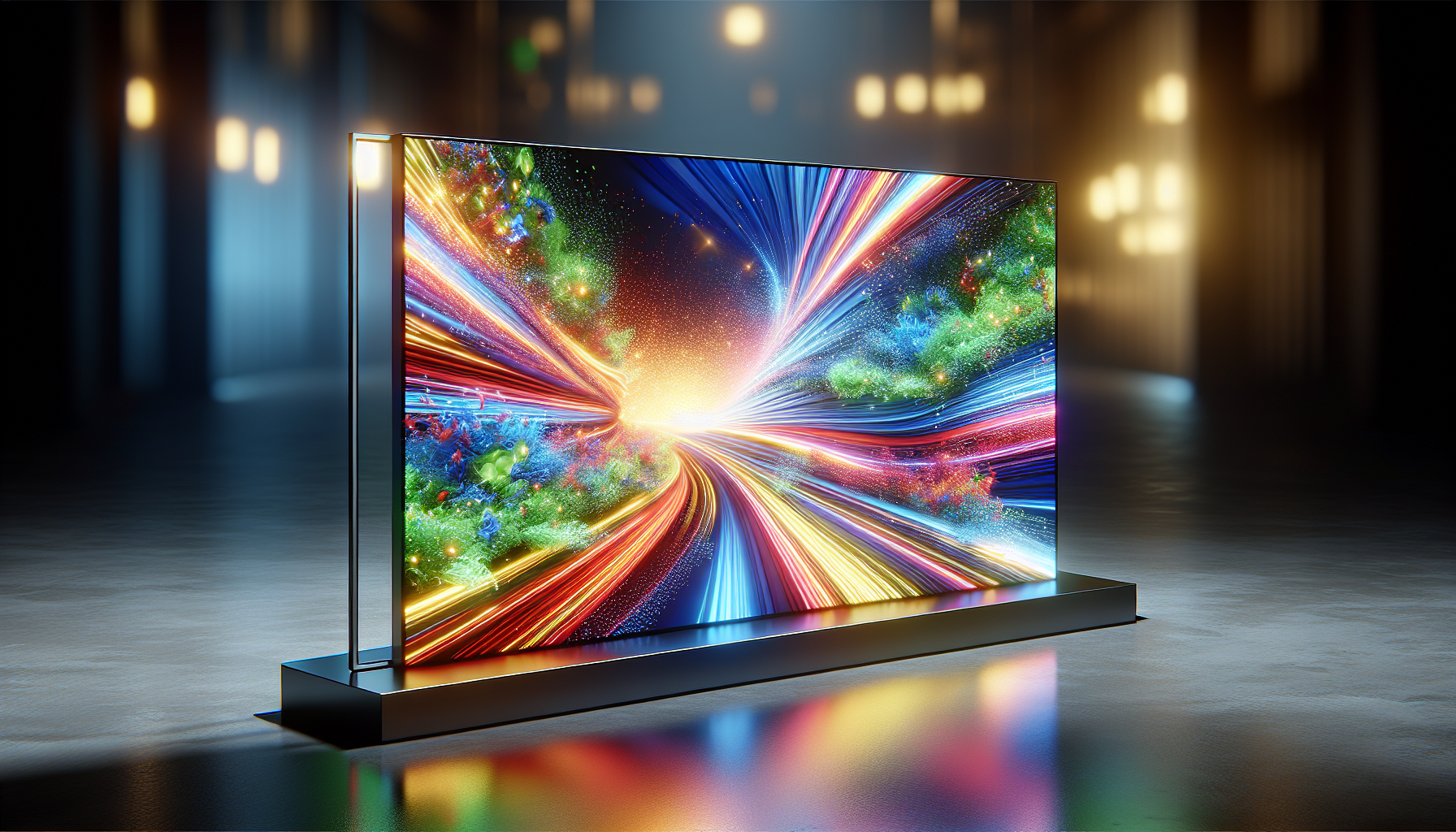
LG Display’s 4th-Generation OLED Panels: A Breakthrough in Brightness, Efficiency, and Color Fidelity
Once again, LG Display has elevated the standard in television technology with the launch of its 4th-generation OLED TV panels. These upgraded panels showcase major enhancements in brightness, energy efficiency, and color accuracy, representing a transformative moment for both home entertainment and gaming fans. Here’s all you need to know about these state-of-the-art displays and their implications for the future of OLED technology.
What Distinguishes the 4th-Generation OLED Panels?
Unmatched Brightness
A standout feature of LG Display’s 4th-generation OLED panels is their capability to achieve a maximum brightness of up to 4,000 nits. This shows a 33% enhancement compared to the previous iteration, tackling one of the enduring issues of OLED technology: brightness. Although maximum brightness does not indicate uniform brightness throughout the display, this upgrade is a considerable advancement, especially for users who prefer viewing content in brightly lit environments.
Improved Energy Efficiency
Besides increasing brightness, the new OLED panels are also designed to be more energy-efficient. LG Display asserts that there is a 20% enhancement in energy efficiency for its 65-inch 4th-generation panels. This is accomplished through innovations in the panel’s framework and power management system, rendering these displays more environmentally friendly and economical to run.
The Technology Behind the Enhancements
Innovative RGB Tandem Structure
Central to these advancements is LG Display’s groundbreaking “Primary RGB Tandem structure.” This technology organizes separate layers of red and green light elements alongside two blue layers. This unique layering allows for greater light output, resulting in higher brightness and improved color fidelity.
New Anti-Reflective Coating
Another important feature is a newly developed film coating that minimizes light reflection on the panel’s surface. This coating effectively reduces light absorption and internal reflection within the panel, resulting in superior color reproduction and a more engaging viewing experience.
Moving Toward Smarter Television
LG Display is positioning these new panels as foundational elements for the upcoming generation of “AI TVs.” While the details regarding the integration of artificial intelligence remain vague, the upgraded brightness, efficiency, and color precision are expected to enhance the functionality of AI-driven features like content optimization and voice command capabilities.
Applications Beyond Television
Gaming OLED Displays
The advantages of the 4th-generation OLED panels extend beyond just televisions. LG Display has plans to gradually implement the “Primary RGB Tandem structure” into gaming OLED monitors. Gamers can anticipate displays that feature richer colors, increased brightness, and enhanced energy efficiency, potentially giving them an edge in fast-paced gaming situations.
The Relevance of These Innovations
The advancements made in LG Display’s 4th-generation OLED panels address many frequent critiques of OLED technology, such as limited brightness and energy inefficiencies. These enhancements not only make OLED TVs more attractive to a wider audience but also set a fresh benchmark for display technology across different uses, from home entertainment to gaming.
Conclusion
LG Display’s 4th-generation OLED panels signify a substantial upgrade in display technology. With brighter visuals, greater energy efficiency, and improved color reproduction, these panels are set to transform the viewing experience for consumers. Whether you’re an avid movie watcher, a gamer, or someone who values advanced technology, these innovations are certainly worth monitoring.
Q&A: Answering Your Queries
Q1: What is the maximum brightness of LG Display’s 4th-generation OLED panels?
A1: The 4th-generation OLED panels can achieve a maximum brightness of up to 4,000 nits, representing a 33% enhancement compared to the earlier generation.
Q2: How does the “Primary RGB Tandem structure” enhance the display?
A2: This structure layers independent red and green light elements with two blue layers, generating more light and improving both brightness and color fidelity.
Q3: Are these panels more energy-efficient than their predecessors?
A3: Yes, LG Display claims a 20% increase in energy efficiency for its 65-inch 4th-generation panels due to developments in the panel’s structure and power management system.
Q4: Will these panels be found in gaming displays?
A4: Absolutely, LG Display intends to gradually incorporate the “Primary RGB Tandem structure” into gaming OLED monitors, providing gamers with enhanced brightness, color fidelity, and energy efficiency.
Q5: What function does the anti-reflective film coating serve?
A5: The anti-reflective film coating decreases light reflection on the panel’s surface and limits internal light absorption, leading to improved color accuracy and a more immersive viewing experience.
Q6: Are these panels created for AI TVs?
A6: Yes, LG Display is promoting these panels as a pivotal part of the next generation of AI TVs, which are anticipated to offer improved content optimization and other intelligent features.
Q7: When can we expect these panels in mass-produced TVs?
A7: LG Display has indicated that the 4th-generation OLED panels will be integrated into “top-of-the-line mass-produced” TVs later this year.
For further updates on pioneering display technology and related advancements, keep following Lonelybrand.